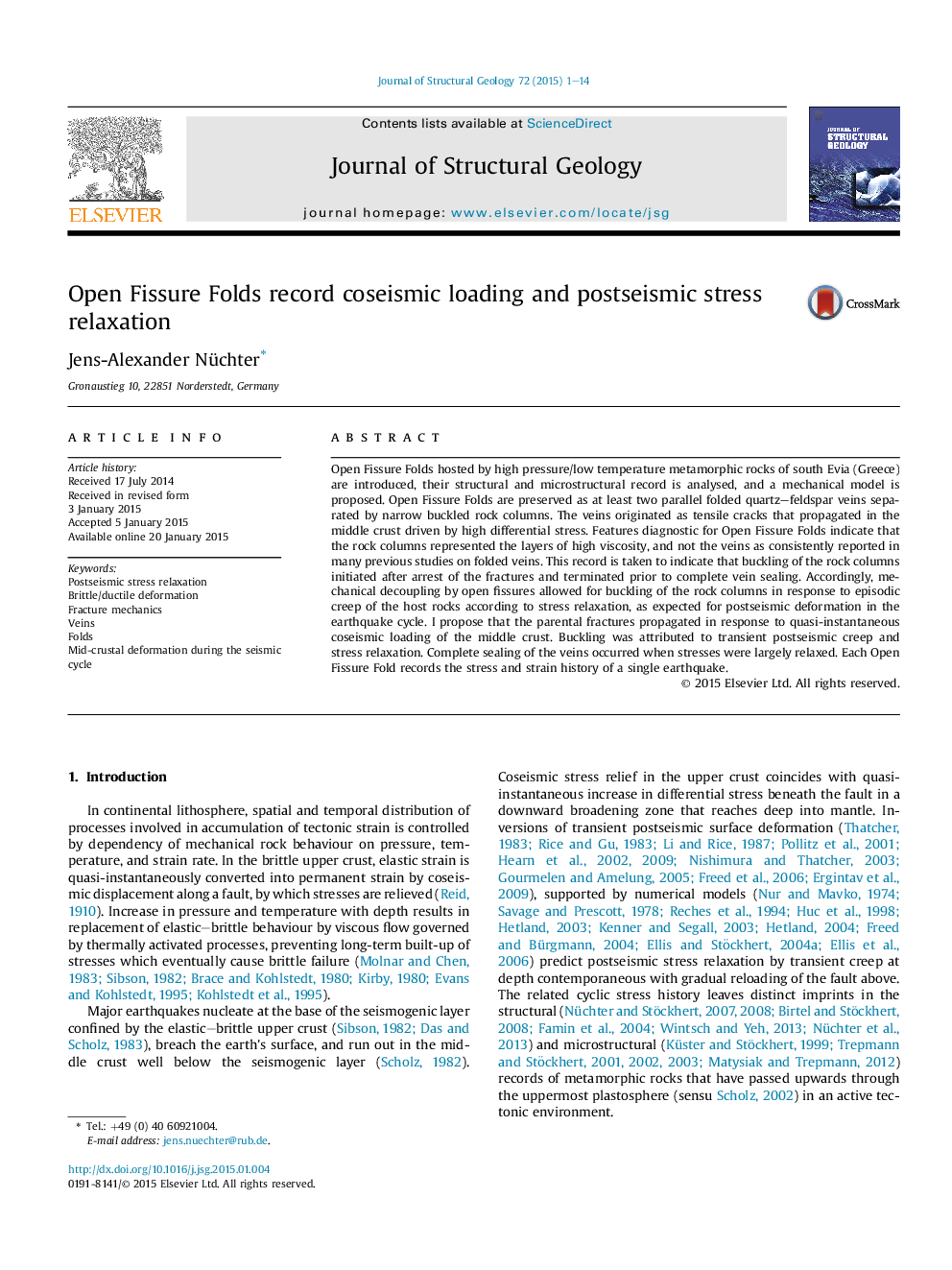| Article ID | Journal | Published Year | Pages | File Type |
|---|---|---|---|---|
| 6444779 | Journal of Structural Geology | 2015 | 14 Pages |
Abstract
Open Fissure Folds hosted by high pressure/low temperature metamorphic rocks of south Evia (Greece) are introduced, their structural and microstructural record is analysed, and a mechanical model is proposed. Open Fissure Folds are preserved as at least two parallel folded quartz-feldspar veins separated by narrow buckled rock columns. The veins originated as tensile cracks that propagated in the middle crust driven by high differential stress. Features diagnostic for Open Fissure Folds indicate that the rock columns represented the layers of high viscosity, and not the veins as consistently reported in many previous studies on folded veins. This record is taken to indicate that buckling of the rock columns initiated after arrest of the fractures and terminated prior to complete vein sealing. Accordingly, mechanical decoupling by open fissures allowed for buckling of the rock columns in response to episodic creep of the host rocks according to stress relaxation, as expected for postseismic deformation in the earthquake cycle. I propose that the parental fractures propagated in response to quasi-instantaneous coseismic loading of the middle crust. Buckling was attributed to transient postseismic creep and stress relaxation. Complete sealing of the veins occurred when stresses were largely relaxed. Each Open Fissure Fold records the stress and strain history of a single earthquake.
Related Topics
Physical Sciences and Engineering
Earth and Planetary Sciences
Geology
Authors
Jens-Alexander Nüchter,
